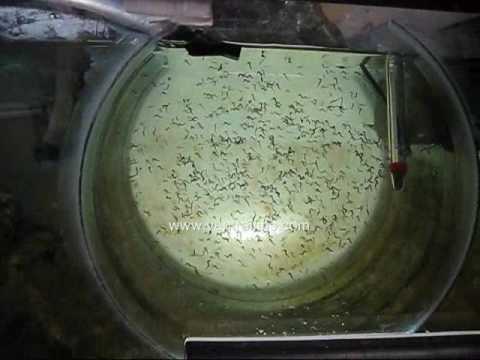One question we commonly receive from aspiring jellyfish owners is something along the lines of, “Do I need a circular tank for jellies, or can I just keep them in my reef tank with my other saltwater critters?” There are a couple different elements to consider in that question, but the answer would ultimately be a no to both.
Though it seems that jellies can get along just fine with most saltwater aquarium species, the tanks themselves pose major problems. Reef tanks have numerous features that can seriously harm jellyfish: sand can scratch or get stuck in their bells, aerator bubbles can be trapped in their bells and cause them to float at the surface and prevent them from eating, and sharp corals can snag on jellies them and tear them to pieces. However, even without any treacherous decorations, a normal fish tank is no place to keep most jellies.
Jellyfish are categorized as plankton, which means they cannot swim against a current, and therefore they’ve adapted to simply drift wherever the sea takes them. Though that may sound like an appealing zen philosophy, it doesn’t translate well to life in the static environment of nano reef systems. Without a constant current in their tank, jellies sink to the bottom almost immediately, and nothing good happens from there.

The traditional tank style for jellyfish culturing is the plankton kreisel (above), which provides one source of current flow that is transferred across a circular space to keep planktonic species suspended in the middle. Though it has been the standard of aquaculture for decades, it doesn’t always make for the nicest of displays. That’s why we created the EON Jellyfish System!
Though the EON has a square shape, the flow pattern created by the dual spray bars is circular, and keeps your jellies suspended the same way a kreisel would, with the added bonus of a stylish display that can fit seamlessly into any interior decor scheme. The width of the spray bars is such that your jellies won’t get stuck in the corners, and the hidden valves make it possible to adjust the flow depending on the size and quantity of jellies you’re keeping. It also has a self-contained sump and a highly efficient multi-stage drip filtration system that make it much easier to maintain a healthy and stable aquatic environment without all the bulky external pieces that a kreisel requires.
So the moral of the story is: The tank doesn’t necessarily have to be circular, but to keep your jellies alive there must be a constant circular flow of water in their tank.


